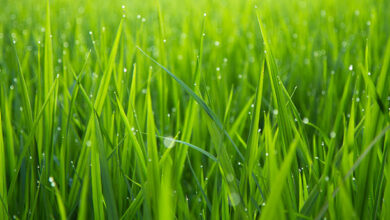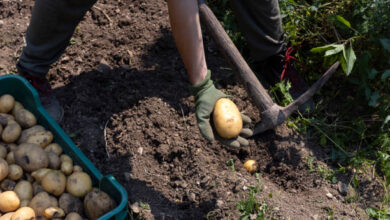Popular Flowers That Start with ‘C’: Varieties, Characteristics, and Growing Tips
Flowers That Start with 'C'
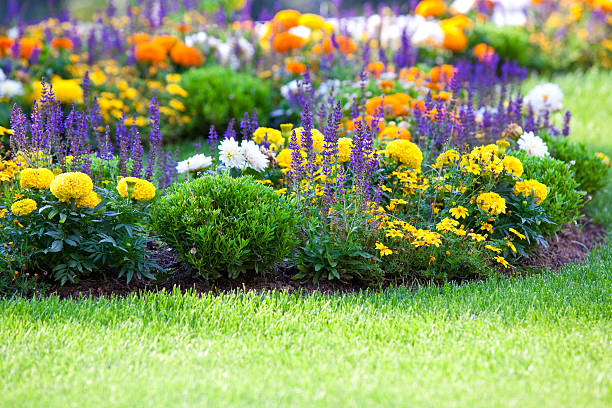
Popular Flowers That Start with ‘C’: Varieties, Characteristics, and Growing Tips
Flowers that start with ‘C’ bring a wide range of colors, shapes, and fragrances to your garden. From the early-blooming crocus to the lush canna lily, these flowers add both beauty and diversity to any landscape. In this guide, we’ll explore various types of Flowers That Start with ‘C’, their unique features, and tips for growing them effectively.
Why Choose Flowers That Start with ‘C’?
Flowers beginning with ‘C’ offer an array of vibrant colors and unique characteristics that can enhance your garden’s aesthetic appeal. These flowers vary from delicate spring blooms to robust summer perennials, providing year-round interest. Incorporating ‘C’ flowers can add contrast, texture, and beauty to your garden design, making it more dynamic and visually appealing.
Popular Flowers That Start with ‘C’
Let’s dive into some popular flowers that start with the letter ‘C,’ each offering its own charm and growing requirements.
- Crocus
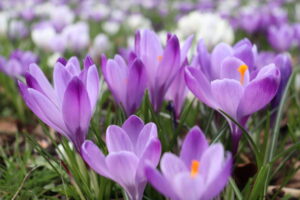
Description and Varieties
Crocuses are among the first flowers to bloom in spring, often popping up through the last remnants of snow. They come in a range of colors, including purple, yellow, and white. These small, cup-shaped flowers are known for their vibrant hues and delicate appearance.
Blooming Season and Growing Conditions
– Blooming Season: Early spring
– Growing Conditions: Prefers well-drained soil and full sun to partial shade. Crocuses thrive in cooler climates and can naturalize well in lawns or garden beds.
Planting and Care Tips
– Planting: Plant crocus bulbs in the fall, about 3-4 inches deep. Space them 2-3 inches apart.
– Care: Ensure the soil remains well-drained. Water sparingly; crocuses do not require frequent watering. After blooming, allow the foliage to die back naturally before removing it.
- Chrysanthemum
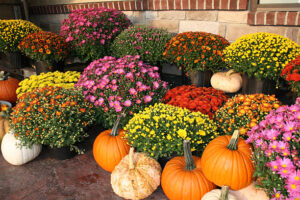
Description and Varieties
Chrysanthemums, or mums, are popular for their bold, daisy-like blooms that come in a range of colors including red, yellow, pink, and white. They are available in various forms, including pompons, buttons, and spider types.
Blooming Season and Growing Conditions
– Blooming Season: Late summer to fall
– Growing Conditions: Enjoys full sun and well-drained soil. Chrysanthemums prefer cooler weather and can handle light frost.
Planting and Care Tips
– Planting: Space plants 12-18 inches apart to allow for their spreading habit. Plant in the spring after the last frost.
– Care: Water regularly, keeping the soil moist but not soggy. Deadhead spent blooms to encourage more flowers and cut back the stems in late fall.
- Canna Lily
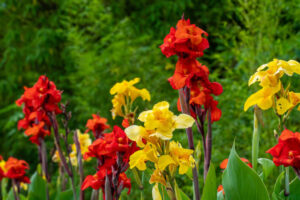
Description and Varieties
Canna lilies are known for their large, tropical-looking leaves and striking flowers in colors like red, orange, yellow, and pink. They create a dramatic effect in garden beds and containers.
Blooming Season and Growing Conditions
– Blooming Season: Summer to fall
– Growing Conditions: Prefers full sun and rich, well-drained soil. Cannas are suited for warmer climates and can tolerate wet conditions.
Planting and Care Tips
– Planting: Plant canna rhizomes in the spring after the threat of frost has passed, about 4 inches deep.
– Care: Water regularly to keep the soil moist. Fertilize with a balanced fertilizer and cut back the foliage in the fall. Cannas can be lifted and stored over winter in cooler climates.
- Camellia
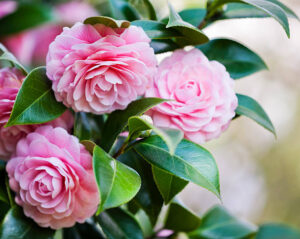
Description and Varieties
Camellias are admired for their elegant blooms and glossy evergreen leaves. They come in various colors including white, pink, and red, and have a classic, refined appearance.
Blooming Season and Growing Conditions
– Blooming Season: Winter to early spring
– Growing Conditions: Prefers acidic, well-drained soil and partial to full shade. Camellias are ideal for shaded areas under trees or along shaded borders.
Planting and Care Tips
– Planting: Plant camellias in the fall or early spring. Space them 4-6 feet apart.
– Care: Water regularly, especially during dry spells. Mulch around the base to maintain soil moisture and protect roots.
- Columbine
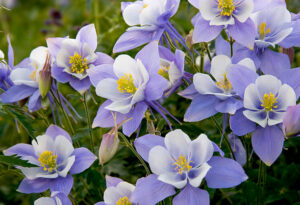
Description and Varieties
Columbines are unique for their delicate, spurred flowers and range of colors including blue, red, yellow, and purple. Their distinctive shape and variety make them a standout in any garden.
Blooming Season and Growing Conditions
– Blooming Season: Late spring to early summer
– Growing Conditions: Thrives in well-drained soil with partial shade to full sun. Columbines are hardy and can adapt to a range of soil conditions.
Planting and Care Tips
– Planting: Sow seeds directly into the garden in spring or fall. Space plants about 12-18 inches apart.
– Care: Water regularly but allow the soil to dry out slightly between watering. Cut back spent flowers to encourage more blooms.
- Caladium
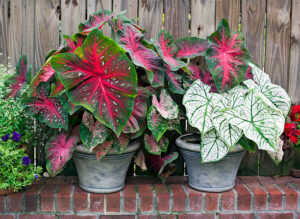
Description and Varieties
Caladiums are prized for their colorful, heart-shaped leaves in shades of green, pink, and red. They are primarily grown for their foliage rather than flowers.
Blooming Season and Growing Conditions
– Blooming Season: Primarily grown for foliage; blooms are not the main feature.
– Growing Conditions: Prefers partial shade and rich, well-drained soil. Caladiums thrive in warm climates and can be grown in containers or garden beds.
Planting and Care Tips
– Planting: Plant caladium tubers in the spring, about 2 inches deep.
– Care: Water regularly to keep the soil consistently moist. Fertilize every 6-8 weeks with a balanced fertilizer. Dig up tubers in fall if grown in cooler climates and store in a dry place.
- Coreopsis
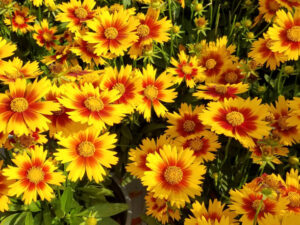
Description and Varieties
Coreopsis, also known as tickseed, features bright, daisy-like flowers in colors such as yellow, orange, and red. They are known for their long blooming period and resilience.
Blooming Season and Growing Conditions
– Blooming Season: Summer to fall
– Growing Conditions: Prefers full sun and well-drained soil. Coreopsis is drought-tolerant and can handle a range of soil types.
Planting and Care Tips
– Planting: Space plants 12-18 inches apart in the garden. Plant in spring or early summer.
– Care: Water regularly but allow the soil to dry between watering. Deadhead spent flowers to extend the blooming period.
YOU MAY LOVE TO READ
Popular Flowers Beginning with ‘S’: Varieties, Characteristics, and Growing Tips
Buckwheat SeedS: Benefits, Uses, and Growing Tips
What Are the 7 Parts of a Plant and Their Functions?
Choosing the Right ‘C’ Flower for Your Garden
To select the best ‘C’ flower for your garden, consider factors such as your garden’s climate, soil conditions, and the amount of sunlight. Here’s a comparison of different ‘C’ flowers to help you decide:
| Flower | Ideal Conditions | Blooming Season | Maintenance Level |
| Crocus | Cool, well-drained soil | Early spring | Low |
| Chrysanthemum | Full sun, well-drained soil | Late summer to fall | Medium |
| Canna Lily | Full sun, rich soil | Summer to fall | Medium |
| Camellia | Acidic soil, partial shade | Winter to early spring | Medium |
| Columbine | Well-drained soil, partial shade | Late spring to early summer | Low |
| Caladium | Partial shade, rich soil | Foliage primarily | Medium |
| Coreopsis | Full sun, well-drained soil | Summer to fall | Low |
Conclusion
Incorporating flowers that start with ‘C’ can bring a range of colors and textures to your garden, each with its own unique growing requirements and aesthetic appeal. By understanding the characteristics and needs of these flowers, you can create a vibrant and diverse garden display. Explore these ‘C’ flowers and enhance your garden’s beauty and variety.

